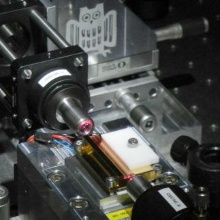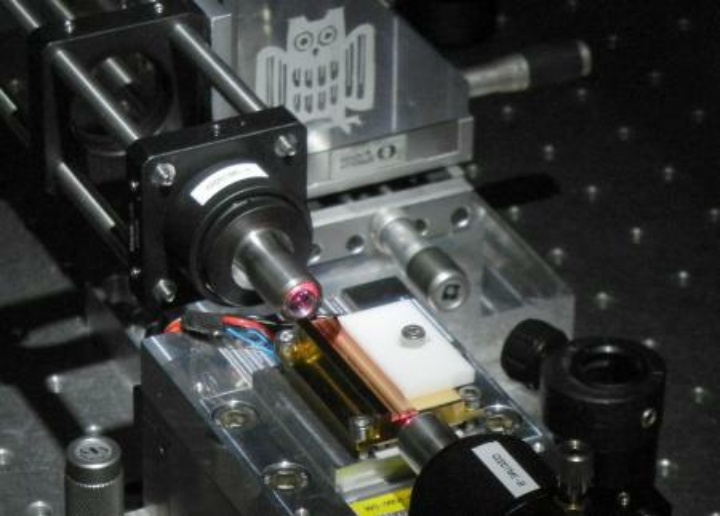Technologies such as quantum communication or quantum computers open up completely new perspectives such as in principle tap-proof data exchange or the instantaneous calculation of complex problems. In these technologies individual light particles, so-called light quanta or photons, play a fundamental role as an information medium. The wavelength of these photons is often in a visible region of the spectrum. This makes them unsuitable for transmitting through long glass fibre cables. Physicists at the University of Saarland and the University of Stuttgart have now shown in a joint experiment how these problems can be solved by changing the wavelength of individual photons in a targeted way with the help of a crystal. The scientific work has now been published in the renowned trade magazine “Physical Review Letters“*).
Scientists have been struggling for over 30 years with challenges faced when generating light particles with precisely defined features. The wavelengths of the photons sent out from the quantum systems investigated up to now are very often in a visible or near infrared spectral region between 600 to 1000 nanometres. These light particles are unsuitable for transport over longer glass fibre routes since they experience too many heavy losses. In order to cover longer distances, it is therefore imperative that the wavelengths (the “colour“) of the photons are in a spectral range in which the absorption in glass fibres and consequently the loss of information is as slight as possible. These are the so-called Telekom wavelengths in the infrared range which are approximately in the range of a wavelength of between 1300 nanometres and 1550 nanometres. With such Telekom photons the vision of the quantum physicists of a “Quantum Internet“ that will one day be able to link several quantum computers with each other moves one step closer to becoming reality.
Scientists of Christoph Becher, Professor for Experimental Physics at the University of Saarland, have now made an important contribution together with their colleagues working for Professor Peter Michler from the Institute of Semiconductor Optics and Functional Interfaces at the University of Stuttgart towards overcoming these difficulties. In their work, which they have now published in the trade magazine “Physical Review Letters“, they succeeded in converting individual red photons at a Telekom wavelength (1313 nm). The red photons were created in an “artificial atom“ , a so-called semi-conductor quantum dot and sent through a special crystal made of lithium niobate together with a strong laser beam. At the end of this the photons exit with a changed wavelength.
The efficiency of the wavelength conversion achieved was over 30 percent: i.e. around every third light quantum is converted. For the first time the researchers were able to prove completely through experiments that important but at the same time also very fragile quantum features of light remain preserved with this wavelength conversion. This is fundamental for applications in quantum information processing. ”In our experiment we have shown what is technically possible,“ explained Christoph Becher. ”However, we can get even better. To do this we must continue to increase the efficiency and choose a wavelength of around 1550 nanometres. This is the spectral range in which glass fibres show the ultimately lowest losses. We wish to work on this in a future project with our colleagues from Stuttgart.“
Contact:
Prof. Dr. Christoph Becher
tel. 0681/302-2466
email: christoph.becher (at) physik.uni-saarland.de
Prof. Dr. Peter Michler
tel. 0711/685-64660
email: p.michler (at) ihfg.uni-stuttgart.de
*) Original contribution:
Sebastian Zaske, Andreas Lenhard, Christian A. Keßler, Jan Kettler,
Christian Hepp, Carsten Arend, Roland Albrecht, Wolfgang-Michael Schulz,
Michael Jetter, Peter Michler, and Christoph Becher: Visible-to-Telecom Quantum Frequency
Conversion of Light from a Single Quantum Emitter
http://link.aps.org/doi/10.1103/PhysRevLett.109.147404
Photos on free use in the framework of reporting on this topic can be found at
www.uni-saarland.de/pressefotos.



